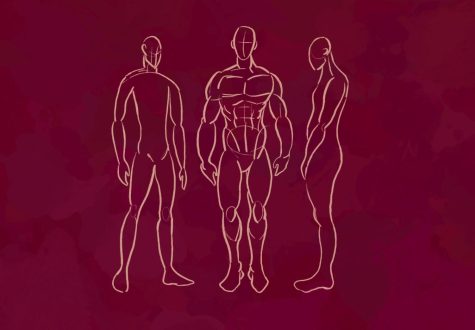Outdated dress code changes
In the first month back at school, many students have noticed the new dress code.In the past, the dress code prohibited certain clothing depicting drugs, violence or profanity. There were restrictions on wearing red and blue, which have been lifted as they were no longer relevant. The rules regarding clothing that promotes or depicts violence, drug/alcohol use, hate speech, pornography or profanity have remained in place. However, the more controversial ones were changed for students regarding revealing clothing. This year, new rules have been implemented by the district allowing all clothing, only requiring the covering of nipples, genitals and buttocks.
There has been much controversy behind this decision, as dress codes have often been deemed cultural and sometimes sexist; the main issue being that they focus more on policing female bodies than male bodies.
Smith explains that during the 2019-2020 school year, the district decided to have less restrictions on the dress code to be more inclusive and allow students at FHS to be more expressive.
“Giving students more freedom with how they dress with expression while also making sure it was appropriate,” FHS Dean Connor Smith said.
However, according to some staff members, the double standards might still be at play, and the school is faced with a problem: nipples.
“The new dress code is simple (no butts, no genitals, no nipples) and allows students to dress in a way that is most comfortable for them,” FHS veteran engineering teacher Bob Capriles said.
“The design of the new dress code is equitable.”
“I’m concerned about the Watermelon Run,” Capriles said. “For many years now, it has been the custom of the Boys water polo team to run in their uniform exposing their nipples, they did this again this year.”
Capriles states that the “no nipples” policy is not properly clarified when it comes to males, and it may be more lenient on the male students; it is still more directed against female students. As the Watermelon run is not an official match, the dress code still stands.
Capriles has another problem with the new dress code,
“What concerns me about the new dress code [is that] clothing from the edible company, Cookies, is still permitted,” Caprilis said. “Though marijuana is legal in California for those of age, it is illegal for those under 18. Wearing a ‘Cookies’ sweatshirt with the distinctive script is, to me, a snub at the dress code.”
However, the gender disparity issue that it attempted to solve might still be a problem at the school. Many students shared this opinion on inequitable gender treatment.
Dominic Caudill is a senior at FHS who was wearing a shirt that clearly contradicts the dress code which states in blurred text: “have another beer, have another bong hit.”
“I get these shirts from my dad and I think they’re funny,” Caudill said.
Caudill claims that staff and teachers just shake their heads in disapproval instead of actually dress-coding him. He says that even with the old dress codes, he has never been stopped by a staff member and simply goes on with his day, even though his female friends get stopped and asked to cover up, without even violating the dress code.
FHS senior Kala Graham is on the opposite side of the spectrum. She states that she gets the completely opposite reaction to a similar shirt, as she gets dress coded for wearing the same types of shirts as Caudill.
“Girls are more looked at than guys with what they wear,” Graham said. “It shouldn’t be distracting, it’s my own body and some people don’t have boundaries for themselves.”
According to Graham, she is stared at when she is wearing certain types of clothing, making her very uncomfortable.
“I think they stare at [drug related] shirts and just give a disapproving head shake yet they really notice the girls and call them out, I’ve even heard the teacher say ‘You go out in that?’ Boys aren’t asked that,” Graham said.
Caudill agrees that the male student body and female student body are not treated the same.
“I have never been dress-coded in all my years here,” Caudill said. “I feel like they are more controlling of girls in censoring what they wear. I’ve heard of boys having to turn their sweatshirts inside out. I’ve heard stories from girls more than boys and they get dress coded for short tops, it’s too exposing and too revealing and it’s distracting. Last year they were very flexible and this year they are very strict. In my opinion it’s their right to wear what they want; boys need self control and listen to the teachers.”
Despite trying to make it more equitable, the dress code remains controversial.











